The first 8 chapters of this build are on my website (bottom of this Index Page). I was posting to the Hand Tool forum - because I have always done so - but not one comment or attempt at discussion for the last two chapters and I can take a hint that no one is interested in builds any more. So here we are ...
The project ended last time with all the parts cut and shaped for the two bases ..
Square peg into a round hole? Not quite, but the square ends of the aprons must join flush with the round legs ...
The choice was either to cope the end face of the apron to match each leg, or to shape the leg to match the end of the apron. I decided on the latter as each leg had a taper and the ends of the aprons were angled at 3 degrees. Matching the legs seemed much simpler. Still, it would prove to be a fair amount of work.
Step 1 - mark out the recess:
Step 2 - chop out the waste with a chisel:
The fit is decent ...
Eight joints later, and the first stage of the first base is at glue-up stage ...
Tapers round legs splayed at 3 degrees ...
The rounded front can be seen here ...
Close up off joints ...
I couldn't resist a little mock-up (but lots still to do - not only that this is one of two) ...
Regards from Perth
Derek




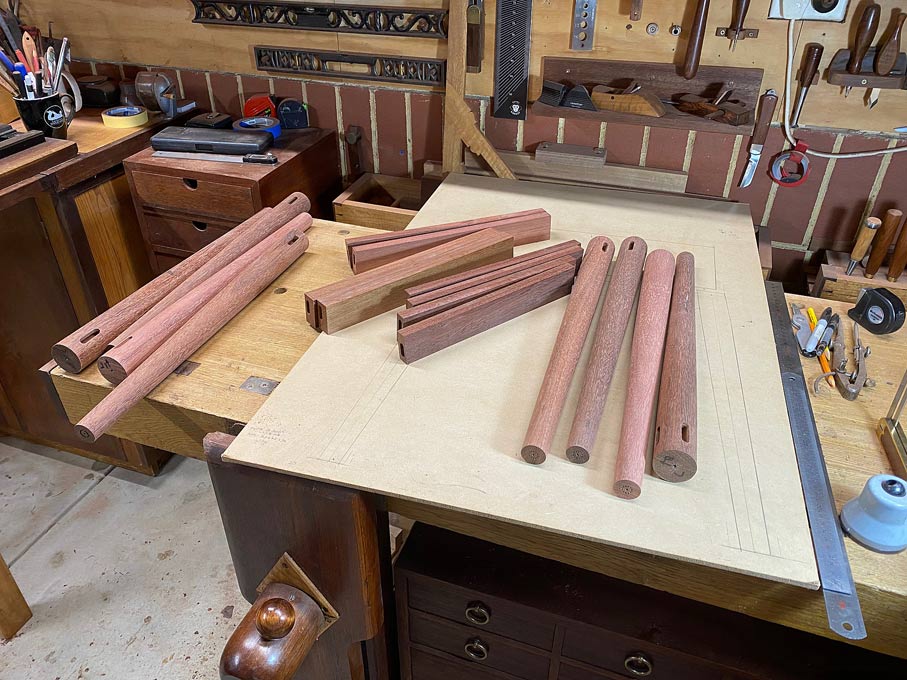
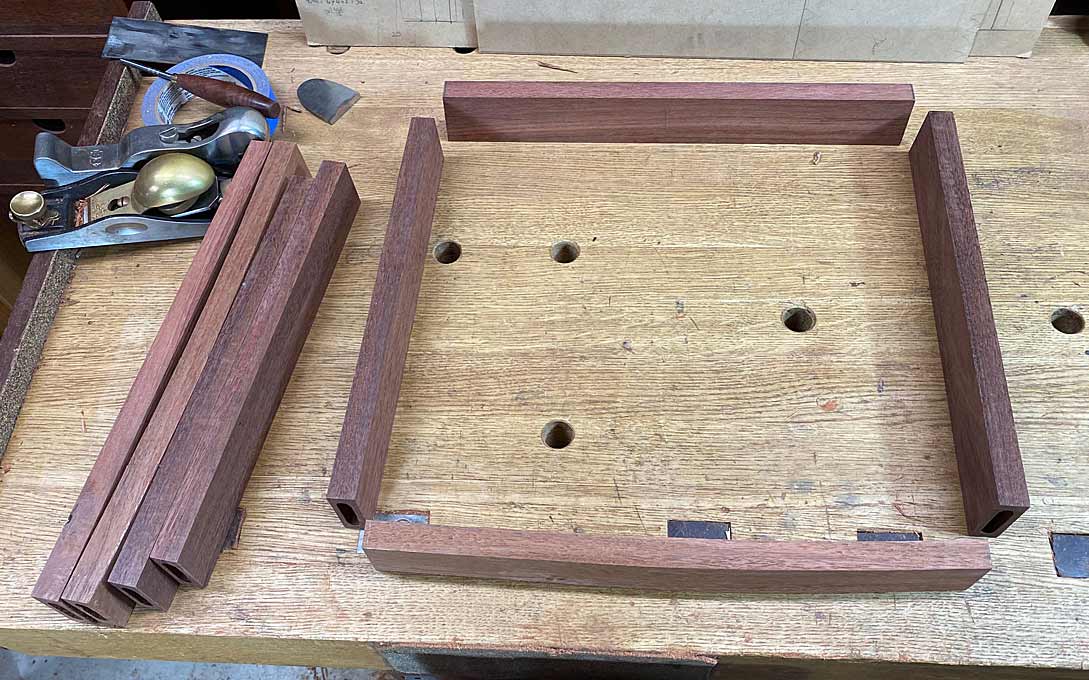
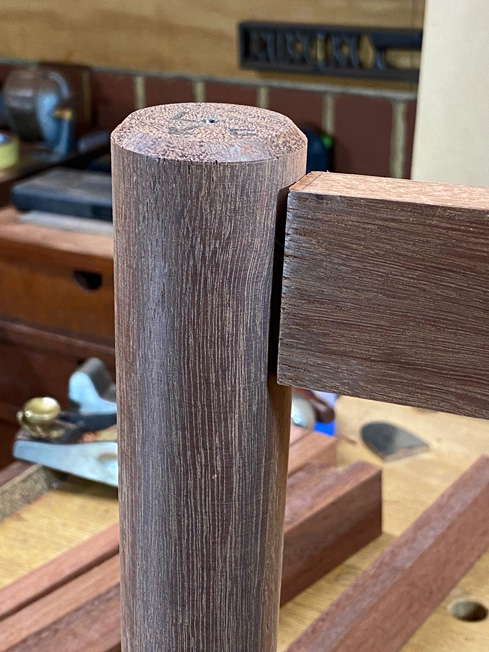
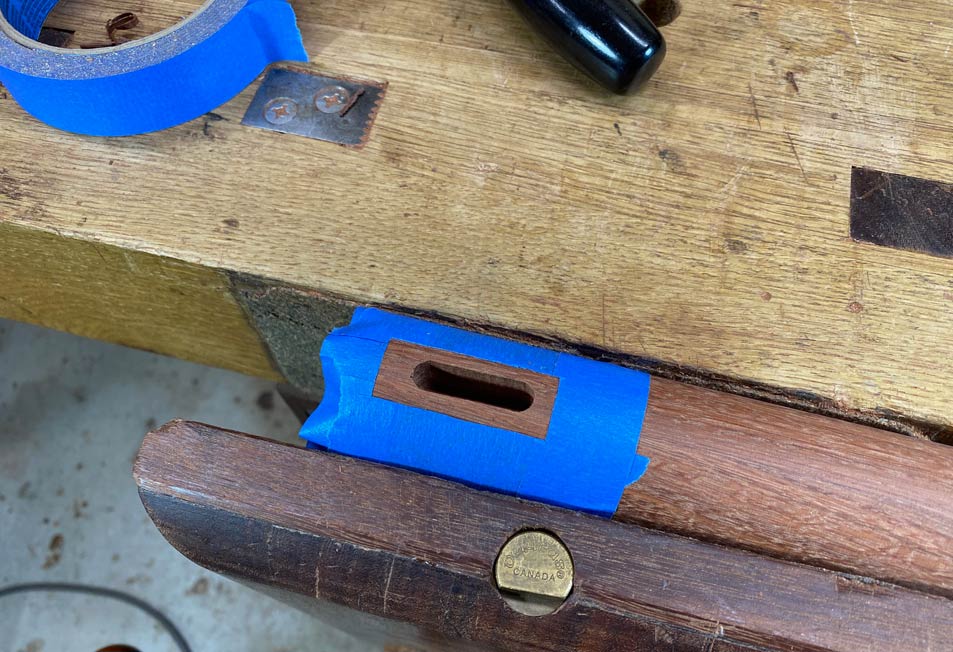
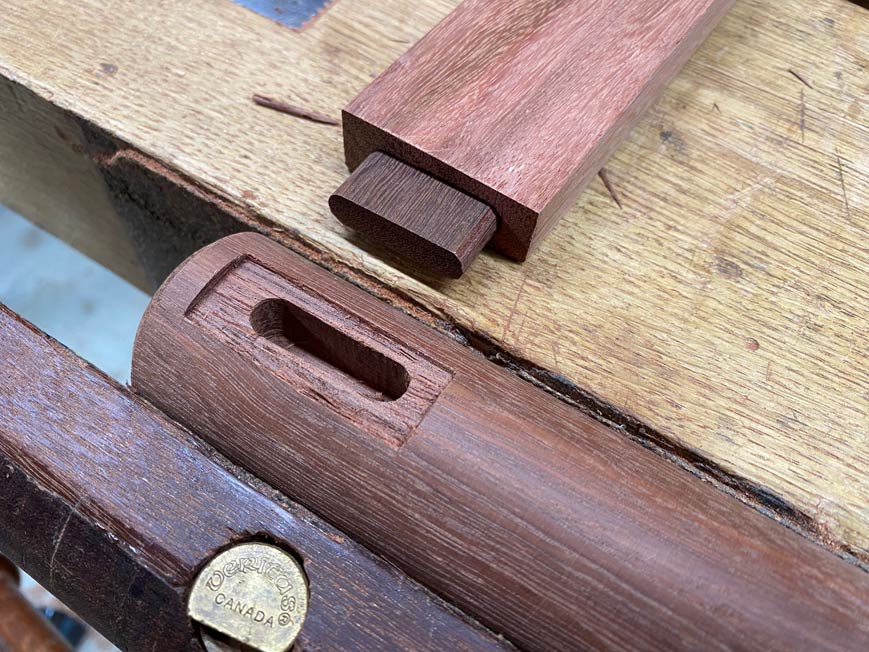
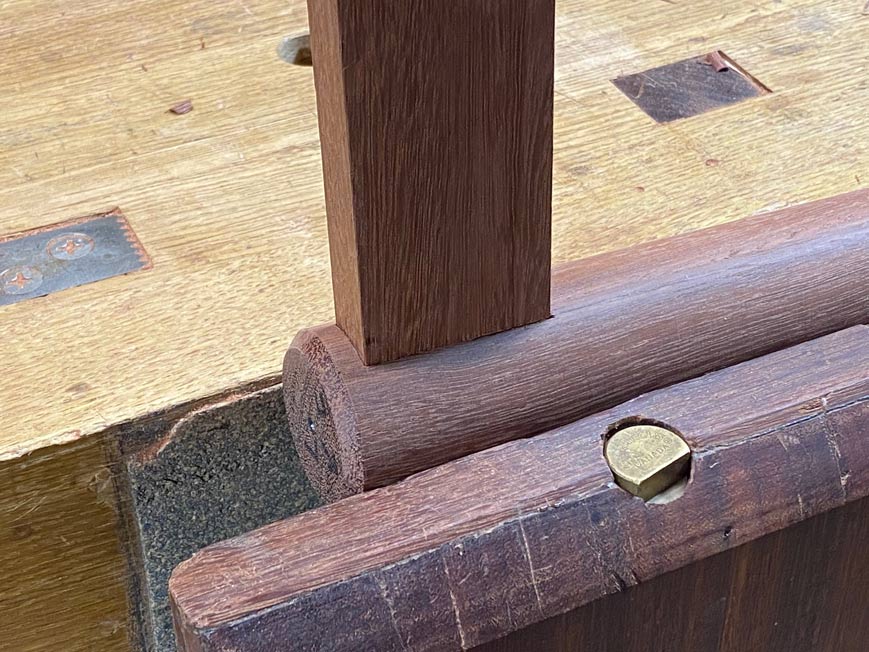
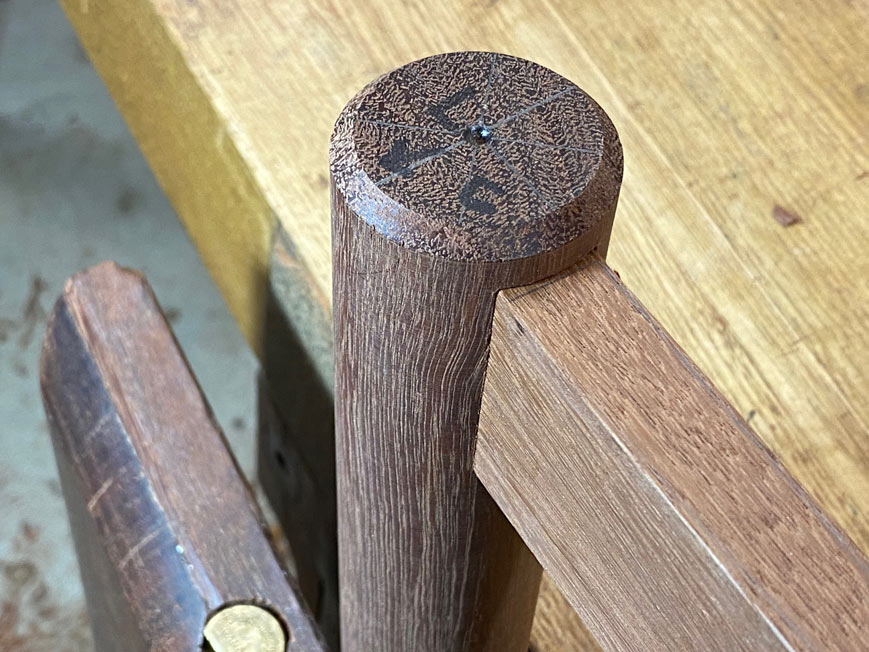
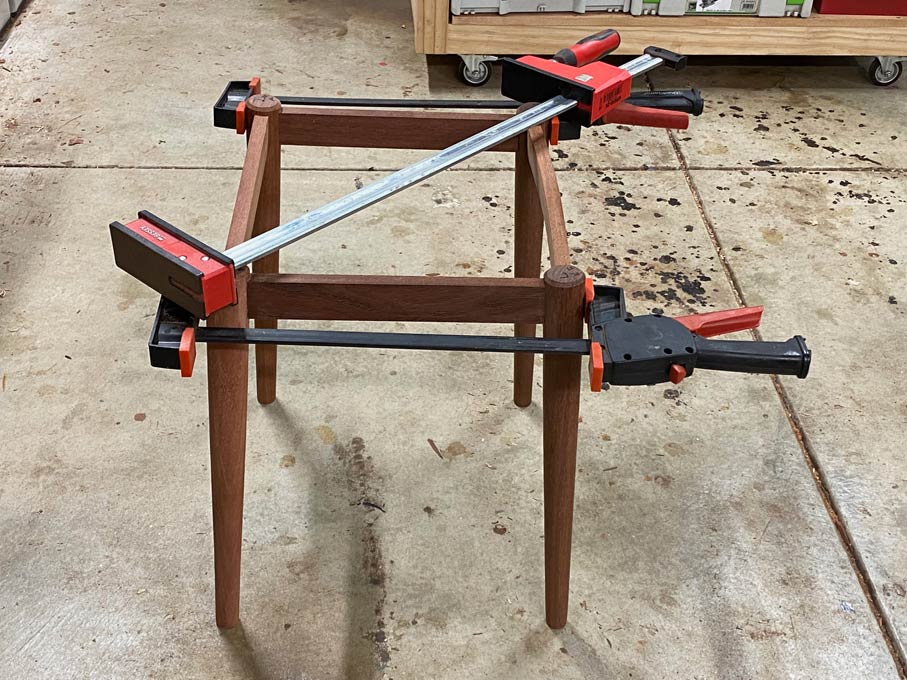
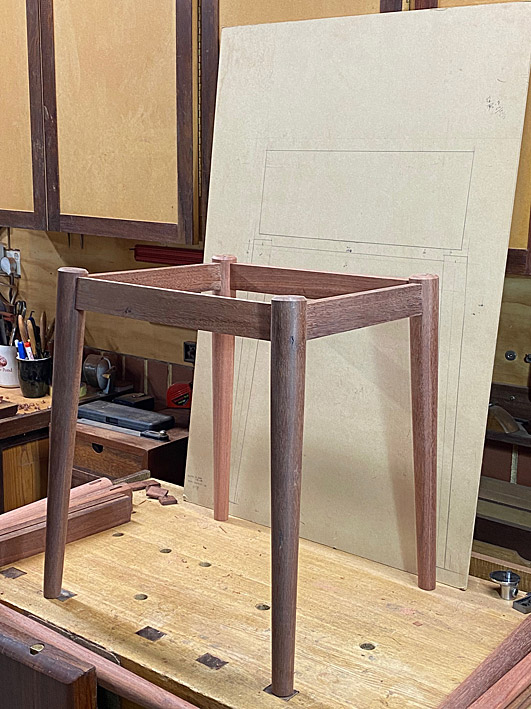
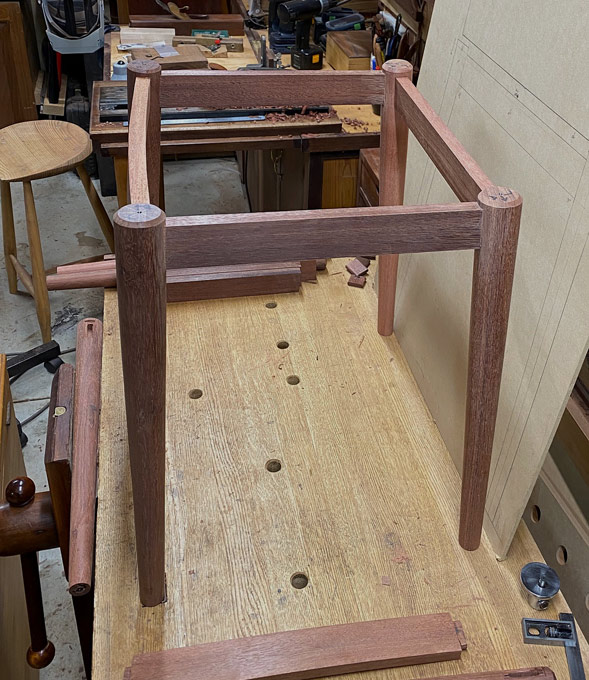
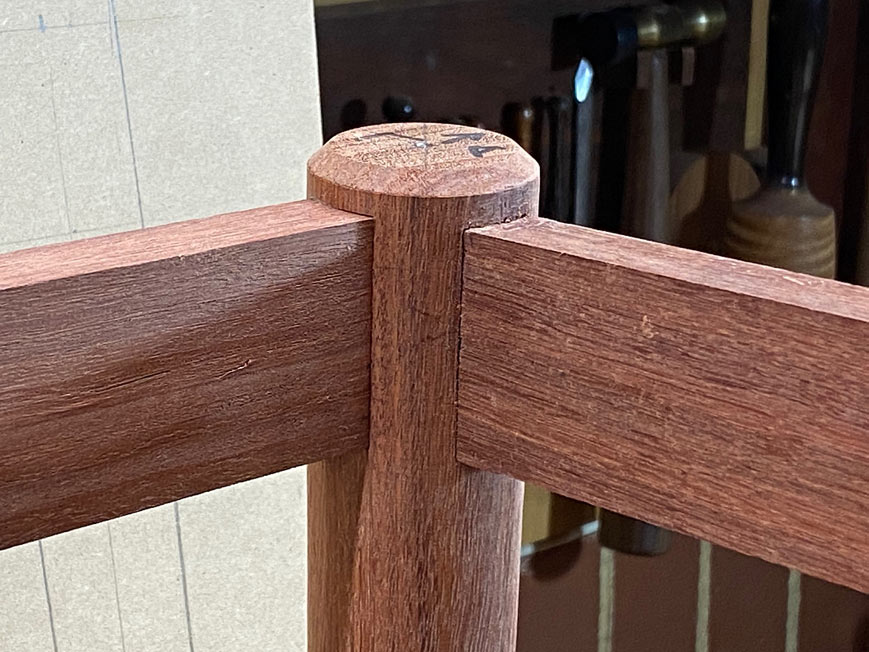
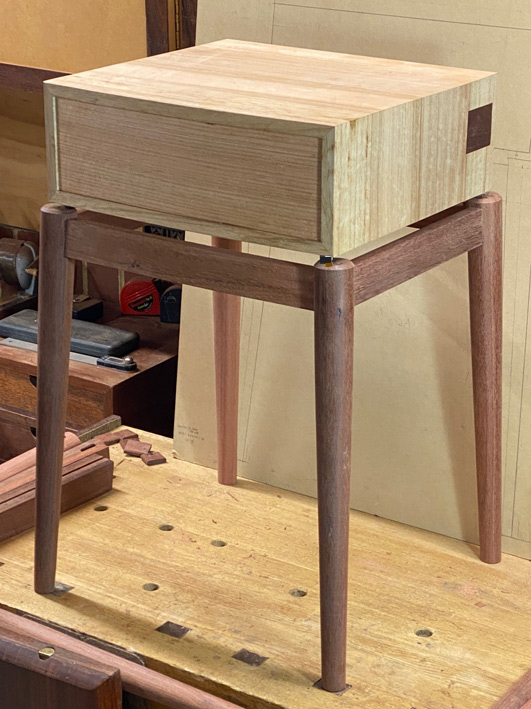

 Reply With Quote
Reply With Quote







